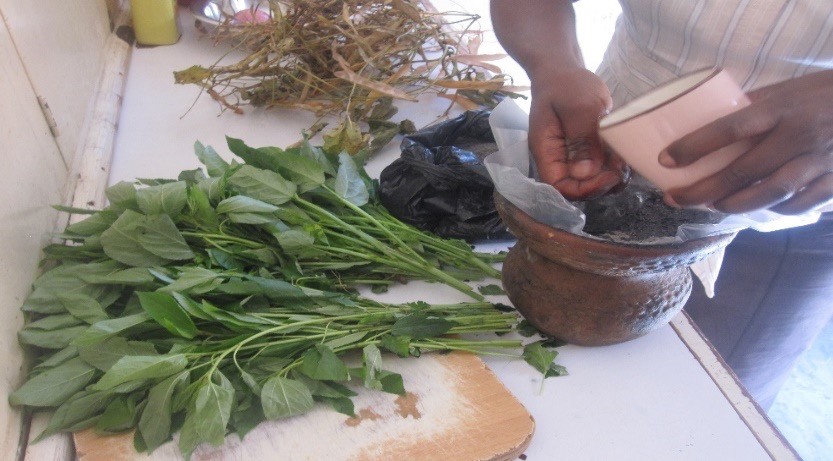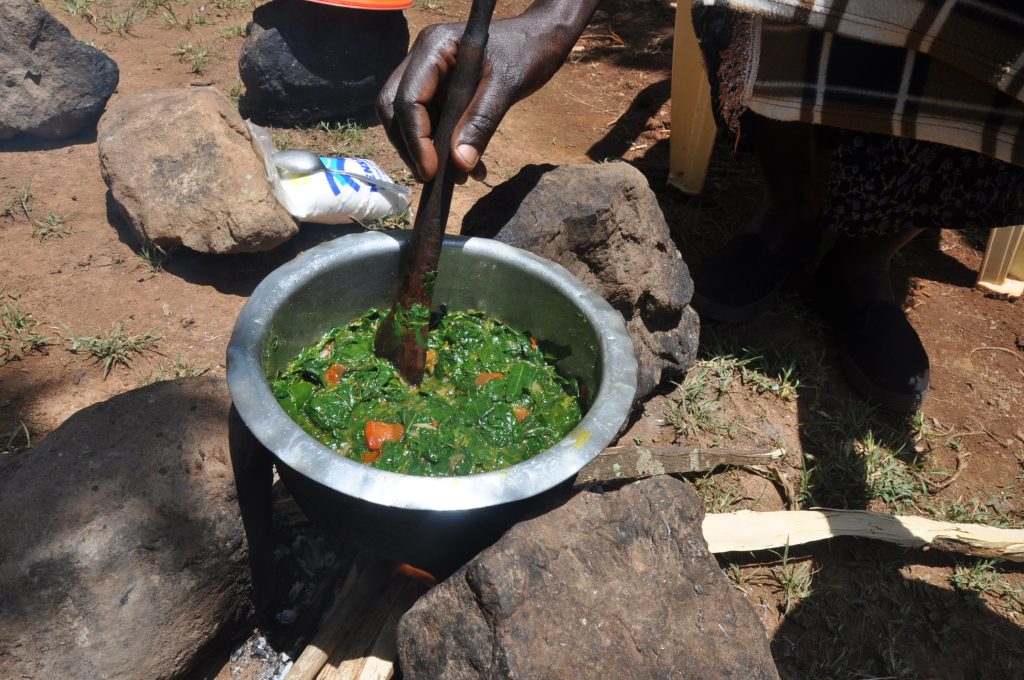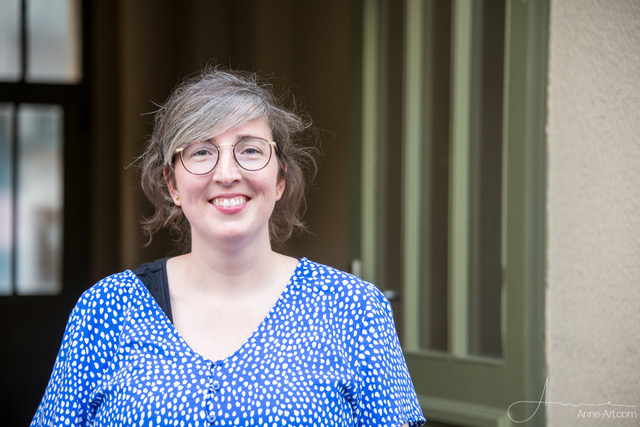Underutilized, neglected, orphan, emergency, miracle, or super crops – these are labels and terms one can find in academic debates and marketing campaigns of so-called superfoods. Superfoods are crops that are celebrated for their high nutritional value and “curative properties.” They are often linked to indigenous communities, traditional practices and a unique place-based history. In recent years, the interest and enthusiasm for superfoods increased: A variety of food products such as chia seeds, moringa and quinoa were marketed globally as superfoods, which fundamentally affected and destabilized the local food systems these foods had been embedded in. Superfoods are often imagined as problem solvers; specifically development experts and the tech sector see them as promising solutions in addressing various issues such as poverty, regional “development,” malnutrition, food insecurity and the environmental crisis. Superfoods have become a vital research arena focusing on their potential health and nutritional benefits. In the superfood discourse, however, the implications for people who depend on these foods, or have a longstanding connection to them, are less considered. Instead of depicting local realities, “imaginative geographies” of producers and the places of origin are (re)produced. Moreover, in superfood discourses, the role of small-scale farmers is often romanticized and stereotyped. In a qualitative participatory study we, that is Meike Brückner, Anne Aswani Musotsi and Gülay Caglar, conducted in rural (Kakamega) and urban (Nairobi) Kenya, we focused on the economic, social and gendered consequences of changing the food landscapes of African Indigenous Vegetables (AIVs) -from a local crop to a superfood.
Changing Food Landscapes of African Indigenous Vegetables in Kenya
AIVs, which are increasingly discussed as superfoods, play an integral part in everyday food practices in Kenya and thereby also in the performance of local, ethnic and cultural foodways. There are around 200 varieties of commonly consumed vegetables, including spider plant (Gynandropsis gynandra), African nightshade (Solanum scabrum), amaranths (Amaranthus blitum) and cowpeas (Vigna unguiculata). During the colonialization of Kenya, AIVs became a symbol of rurality, backwardness and poverty, which ultimately led to a negative image. Today, they are grown in small kitchen gardens for household and community consumption and on larger plots for the domestic market. They are cooked, preserved and eaten by many of the ethnic communities in Kenya. Women hold the main body of knowledge and skill for their preparation and have a variety of methods to cook them in a palatable way or to preserve them for consumption.
During the last years, AIVs made their way into Kenyan supermarkets; they can now be ordered online, shipped worldwide as dried leaves and found in restaurants in Kenya. Even if the AIVs market is volatile, the access to AIVs, their use and availability has significantly changed over the last fifteen years, appealing to new consumers, for example, in urban areas. While the increasing options of provisioning might be assumed as inherently expanding access to AIVs, the transformation has fundamental consequences in terms of accessibility for less affluent social groups.
Local Food Relationships: Social Cohesion and Community Networks of Belonging
AIVs that were once called “weed,” “old-fashioned” and “poor people’s food” are now increasingly considered “super vegetables” or “rich people’s food,” as one participant in an interview said. Such narrative changes and shifts in the symbolic value of AIVs can especially affect the food relationships local communities have built to them. Participants of the study told us how they are connected to AIV. These vegetables have been part of their culinary experience and learning, and are a key component of their ethnic foodways. Many women have had unique recipes passed down from generation to generation. These recipes are important for keeping local and nutritional knowledge and practices alive. The consumption of AIVs has created an important space of interaction among peers: they cook and eat together, exchange recipes, and discuss time-saving, cost-efficient preparation techniques or the environmental and nutritional benefits of AIVs. In other words, AIVs are foods that bring people together and that foster social cohesion.
Today’s market-oriented development of AIVs raised concern in some of the participants. They expressed skepticism, as in this process, the vegetables that were once available for free because they grew widely are now becoming more and more expensive. While in the past it was common to consume AIVs, especially in times of food scarcity, the new commercialization may lead to less frequent consumption and deny people with small income access to them. The results, moreover, showed that the price increase influences the relations that communities have created around AIVs. Longstanding practices may be at risk, such as non-monetized practices of gifting, sharing, or bartering. However, we observed that consumers have strategies to source AIV beyond the conventional market. To access them at a cheaper price, some participants in Nairobi for example, ordered from farmers, often family members or people that belong to the same ethnic community, people they know and trust. This form of cooperation played a central role in providing affordable food, in supporting community members and in fostering a sense of belonging. In light of these dynamics, it can be argued that local vegetables are still important and are an expression of local food relationships. However, the rise of AIVs caters to a specific social class, producing food privilege and reinforcing unequal power distributions.
Food as Medicine or Lifestyle? Contrasting Health Discourses
Among the study participants, AIVs are considered healthy and used as a source of nutrients and as medicine. Dietary research and advice has contributed to the renewed attention on AIVs. They are rich in nutrients, particularly vitamins A, C, iron and calcium. The respondents of the study used AIVs for treating stomach or digestive problems, high blood pressure or diabetes. Elderly people connected their well-being to vegetables and told us that they are an important component of a healthy diet and that AIVs make them feel strong. Their use during pregnancy or breastfeeding exemplifies their health benefits: We were told that drinking the water in which AIVs were cooked is considered beneficial and can improve maternal nutrition. Health was also mentioned in the context of food quality and production. AIV from supermarkets are considered less healthy compared to those bought from a local seller. Respondents explained that AIVs from the supermarket are tasteless and their appearance is different in terms of size. They attributed the bigger leaves to the production in greenhouses and considered them less nutritious. This points to the strong link between the perceived food quality and the ascribed health outcome.
Looking at the food-health nexus, there is a contrast between the health discourses addressing AIV in Kenya and superfoods more generally. While AIVs are used as medicine and their consumption is, to a large extent, still locally and historically embedded, the consumption of superfoods is rather considered a “lifestyle.” Superfoods are used for the development of healthy eating behavior and for constructing identity. This argument is based on three observations: Firstly, drawing on Tina Sikka, it can be argued that the eating of superfoods is a “normative food trend among affluent groups in the Global North,” oriented towards a logic of choice, individualist perspectives on health, and embedded in a neoliberal discourse of the body and eating in western culture. The consumption of superfoods is reserved for particular privileged groups that are advantaged based on class and geographical location. In contrast, the sharing of knowledge about AIVs in Kenyan communities, their provisioning and their consumption is mainly based on solidarity and social cohesion. Secondly, in the case of AIVs, healthy eating is not yet detached from the local conditions of production and is deeply embedded within cultural, symbolic and ecological meanings of food. Local ties between producers and consumers or the common practice of cultivating a variety of AIVs, and thus promoting local biodiversity are only two examples that illustrate this embeddedness. Contrastingly, in food scholarship, superfoods are portrayed as “food from nowhere.” It is argued that the health-centric focus of superfood-marketing erases their local context and embeddedness, which makes health-oriented consumers focus less on origin. Thirdly, while knowledge on superfoods is constructed for consumers in the Global North, the sharing of nutritional food knowledge has a long tradition and is enacted through constant interaction and learning in the Kenyan setting. In this sense, the consumption of superfoods can also be read as a continuation of food colonialism and the discovery of so-called exotic food products, cuisines and dishes.
We therefore need a critical discourse on superfoods. The consequences of changing food landscapes such as calling, marketing and selling foods as superfoods are much more complicated than assumed so far. The long-term impact of shifts in narratives – from a “backward” to a super food – in production – from subsistence to commercial farming – and the shift in access – from an affordable to an expensive food – need to be critically reflected. Particularly, we need to pay attention to the food privilege and neo-colonialism the emerging global interest in superfoods creates and the implications this has for local livelihoods.



